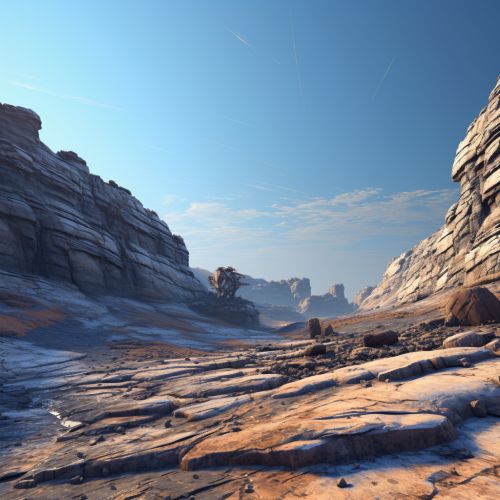Role of Tectonics in Shaping Planetary Surfaces
Introduction
The tectonic activity of a planet plays a significant role in shaping its surface. This geological phenomenon, which involves the movement and deformation of the planet's lithosphere, can lead to the formation of various landforms, such as mountains, valleys, and plateaus, as well as the occurrence of earthquakes and volcanic eruptions. The study of tectonics is crucial in understanding the geological history and future of a planet, including Earth.


Tectonics and Planetary Surfaces
Tectonics is a geological process that involves the movement and deformation of a planet's lithosphere – the rigid outermost shell of a rocky planet. The lithosphere is broken into several large and small tectonic plates, which float on the semi-fluid asthenosphere beneath. The movement of these plates, driven by the planet's internal heat and gravitational forces, leads to various geological phenomena, including the formation of mountains, valleys, and plateaus, as well as the occurrence of earthquakes and volcanic eruptions.
Tectonic Processes
Tectonic processes can be broadly categorized into three types: divergent, convergent, and transform plate boundaries.
Divergent Boundaries
At divergent boundaries, tectonic plates move apart from each other. This movement is primarily driven by the upwelling of material from the mantle, which cools and solidifies to form new crust. This process, known as seafloor spreading, is responsible for the formation of mid-ocean ridges and the widening of ocean basins.
Convergent Boundaries
At convergent boundaries, tectonic plates move towards each other. Depending on the types of crust involved (continental or oceanic), this can lead to the formation of mountain ranges, volcanic arcs, or deep-sea trenches. The process of subduction, where one plate is forced beneath another, also occurs at convergent boundaries, leading to the recycling of crustal material into the mantle.
Transform Boundaries
At transform boundaries, tectonic plates slide past each other horizontally. This movement can cause intense seismic activity, as seen along the San Andreas Fault in California.
Tectonics and Planetary Evolution
The tectonic activity of a planet is closely linked to its thermal evolution. Planets generate heat through radioactive decay and residual heat from their formation. This heat drives the convection of material within the mantle, which in turn drives tectonic activity. As a planet cools over time, its tectonic activity may decrease, leading to a reduction in surface deformation and volcanic activity.
Tectonics on Other Planets
While Earth is the only known planet to exhibit active plate tectonics, evidence of past tectonic activity has been found on several other planets and moons in our solar system.
Mars
Mars shows evidence of ancient tectonic activity, with features such as the Valles Marineris – a vast canyon system that stretches across the Martian surface. However, Mars does not currently exhibit active plate tectonics.
Venus
Venus, Earth's closest planetary neighbor, shows evidence of tectonic activity, but not of plate tectonics. The surface of Venus is dominated by volcanic features and large rift zones, suggesting a different style of tectonics.
Europa
Europa, one of Jupiter's largest moons, shows evidence of tectonic activity in its icy surface. The moon's surface is crisscrossed by a network of ridges and fractures, suggesting that its ice shell has been deformed by tectonic forces.
Conclusion
Tectonics plays a crucial role in shaping the surfaces of planets, leading to the formation of diverse landforms and geological phenomena. The study of tectonics not only helps us understand the geological history and future of our own planet, but also provides insights into the geological processes that occur on other planets and moons in our solar system.
